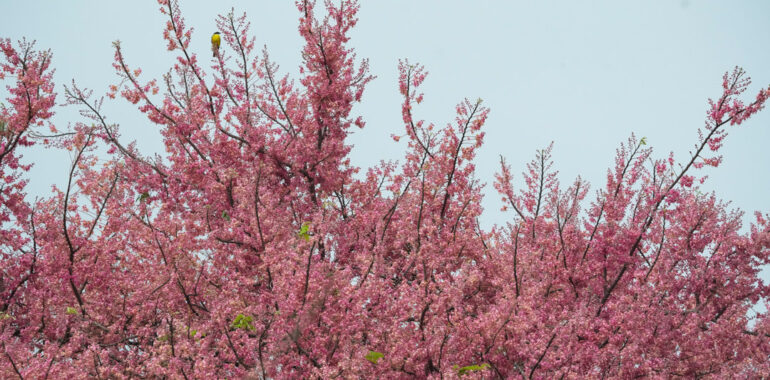On April 5th, 2024, our expedition team went to the Northeast of Guatemala in search of 4 different native plants that are locally used as flavorings for cacao. Finding them and learning about them would enrich the research we have conducted so far on the cacao drink and the flavorings for cacao. These species are:
- Cassia grandis
- Ceiba pentandra
- Ceiba aesculifolia
- Pachira aquatica
To accomplish this task we visited different areas of the country, starting with an exceptional quest to look for Ceiba pentandra and Ceiba aesculifolia in the department of Zacapa. We found large ceiba trees that had hanging pochas (as the seed pods are locally called), of which some had already opened. Moreover, we saw the pochas releasing their characteristic cotton, a fiber in which the seeds of such majestic trees are wrapped. The purpose of searching for this peculiar plant was to collect 100 pochas in order to extract and photograph its seeds. According to the research of Dr. Nicholas Hellmuth, ceiba seeds were used as flavoring for cacao in the Mayan civilization.
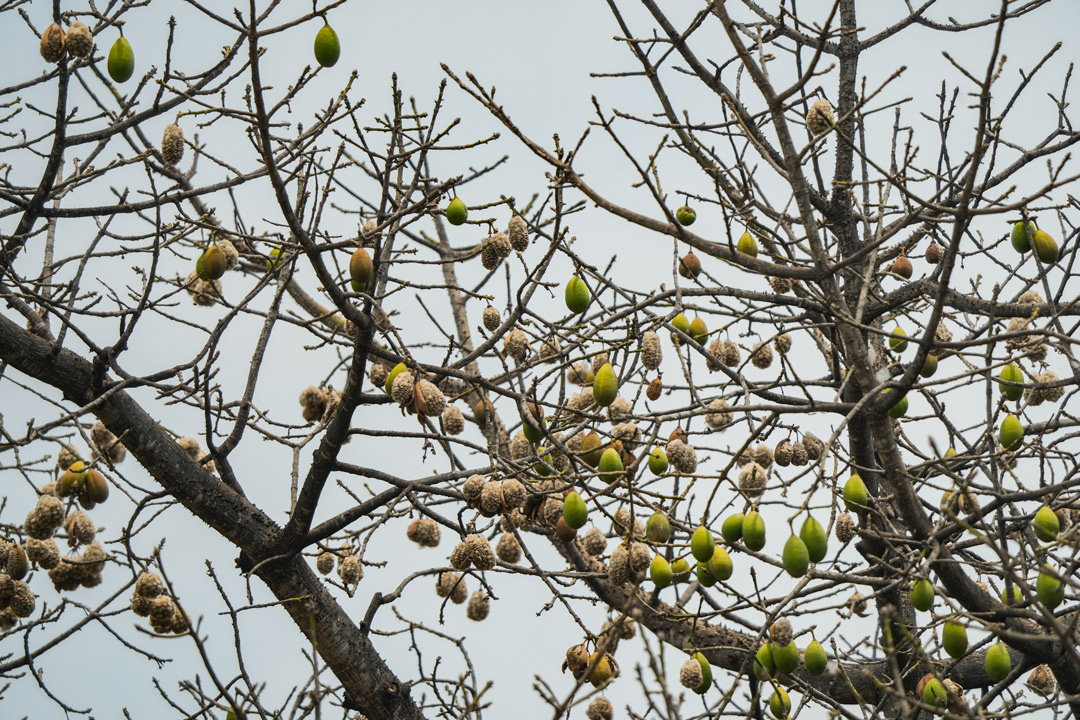
Fruits and cotton of Ceiba pentandra – Photo by PH Maria Alejandra Gutierrez. Zacapa. Apr 5th 2024
The collection of Ceiba pentandra pochas was a success, since it was possible to collect the necessary amount for documentation. Next, Ceiba aesculifolia seeds were collected.
The Ceiba aesculifolia trees are very abundant in the dry corridor area of Guatemala. We went to the Nature Preserve for the Conservation of the Heloderma and the Dry Forest where we got the support of Gilberto, one of the park rangers. He guided us to an area adjacent to the reserve where there were several ceiba trees with a huge amount of fruits. There, we were also able to collect enough pochas that were about to burst. According to the research of Dr. Nicholas Hellmuth, the seeds of C. aesculifolia are used as flavorings for cacao just in the same way as seeds of C. pentandra.
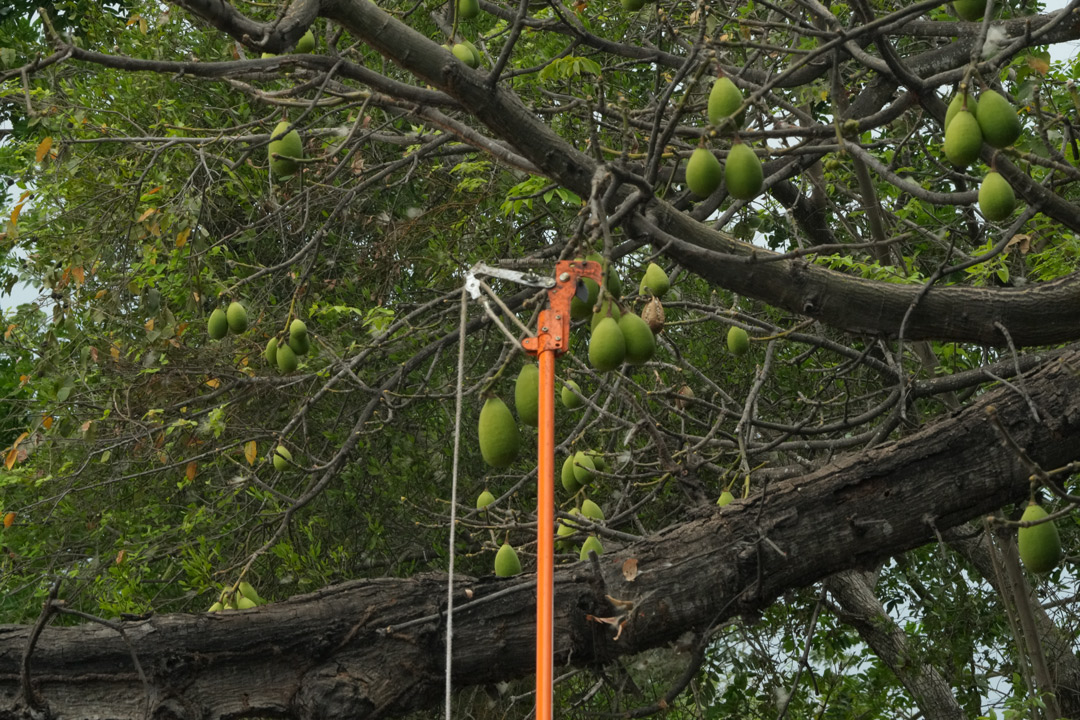
Cutting the fruits of a Ceiba pentandra tree with a telescopic tree pruner. Photo by PH Maria Alejandra Gutierrez. Zacapa, Apr 5th 2024.
Given that no Cassia grandis trees were found in the area and throughout our trip so far, we extended our expedition until we reached the Guatemalan Caribbean. Our final destination was La Buga Livingston, where our previous biodiversity documentation project took place in 2020 – 2021.

Pink flower of Cassia grandis in “Barrio Paris” at Livingston. Photo by researcher Victor Mendoza. Apr. 6th 2024
On the next day after arriving at La Buga, the expedition team began the search for Cassia grandis. After consulting the local people, we went to different private nature reserves in Livingston where we found more than 5 of these trees. In addition, we learned a curious fact about the local names for this species. FLAAR Mesoamerica had previously documented Cassia grandis in the Maya Biosphere Reserve, Petén. There, local people know this tree as “Bucutz”. However, in the Guatemalan Caribbean this plant is known as “Carajo” or “Carao”. In Livingston, people also described this species as a medicinal plant widely used for blood diseases. Apparently the plant is a great source of iron when extracting the seeds from their pods and preparing them into a drink.

Vines and pink flowers of Cassia grandis found in the Finca “Where the Pirates Hide” Livingston. Photo by PH Maria Alejandra Gutierrez. Apr 6th 2024
Cassia grandis is a tree species that belongs to the Fabaceae family. In the months of February and March they become very showy and striking for their outstanding pink flowers. In fact, we got to see this in Livingston since the trees were in full bloom and we captured such a spectacle through impressive shots made with our Drone. On top of that, and with the help of our assistant, Pedro, we also got to collect the number of pods necessary for our documentation on flavorings for cacao. Once more, the seeds are the part of this tree which is used as flavoring for cacao according to Dr. Hellmuth.
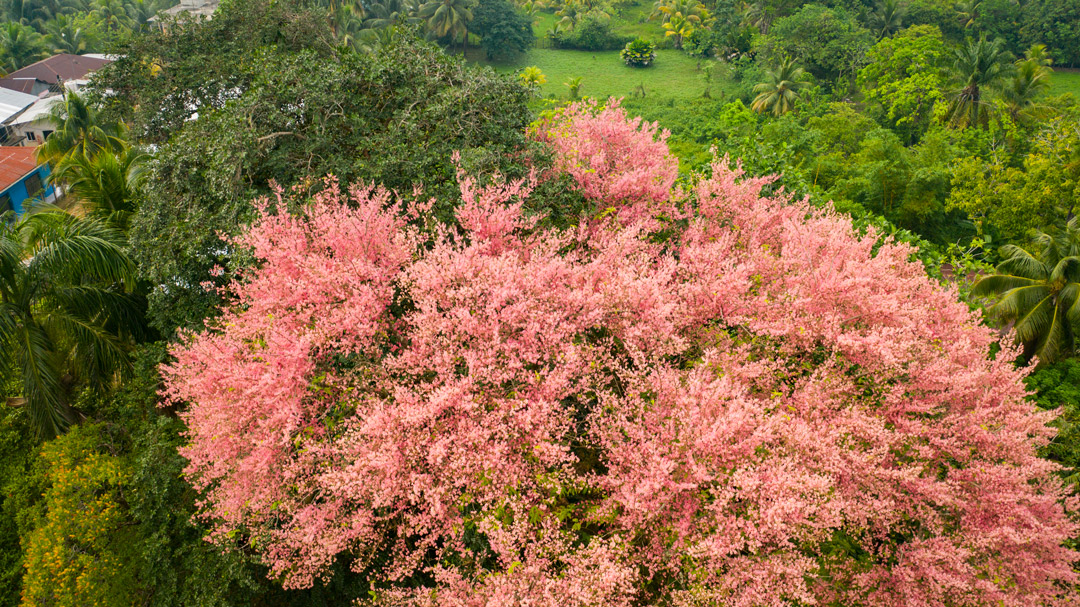
Tree top of Cassia grandis in “La Pista” at Livingston. Photo by Pilot Drone Brandon Hidalgo. Apr. 6th 2024
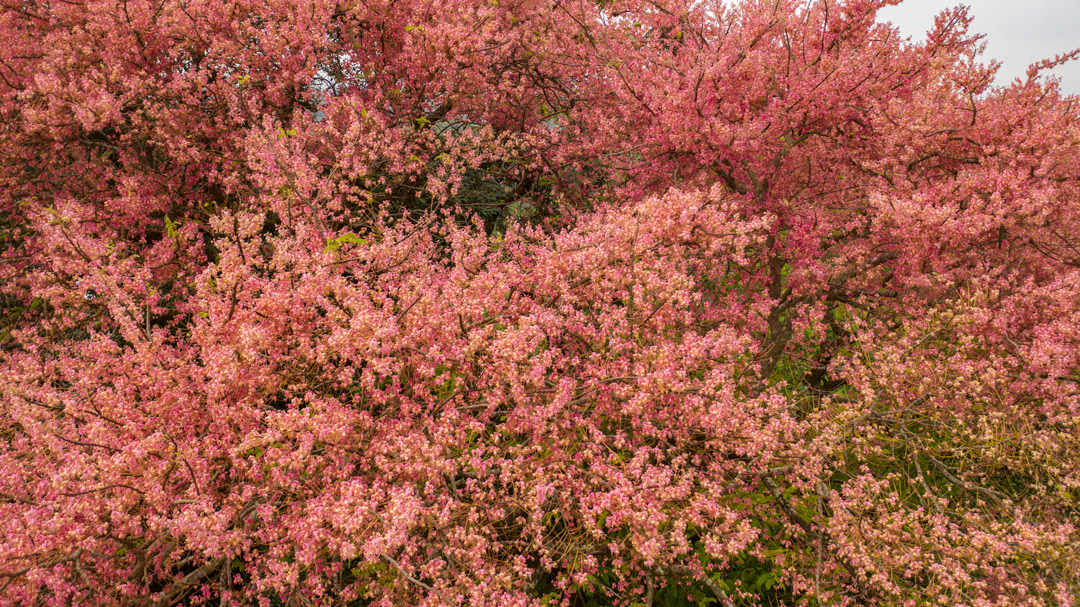
Tree top, pink flowers of Cassia grandis in “Barrio Paris” at Livingston. Photo by Pilot Drone Brandon Hidalgo. Apr. 6th 2024
Lastly, our team entered the Livingston beach area in search of Pachira aquatica, locally known as zapotón. A large number of trees were located in the impressive Playa Quehueche. Because we had previously obtained the necessary permits, we were able to collect 5 fruits of this plant.As with the rest of the species, and according to the research of Dr. Nicholas Hellmuth, Pachira aquatica has been considered an edible species since ancient times from which the unripe seeds could be used for consumption and as flavoring for cacao .
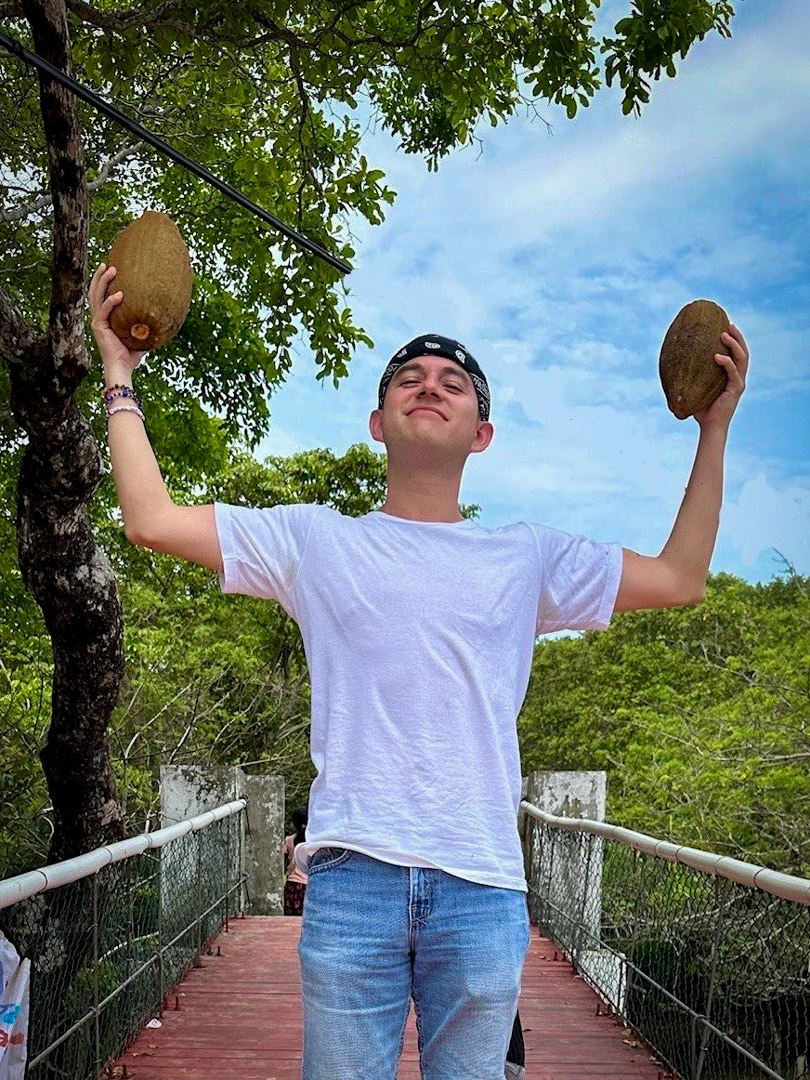
Researcher Victor Mendoza with two fruits of Zapotón (Pachira aquatica) in Playa Quehueche, Livingston. Photo by Brandon Hidalgo. Apr. 6th 2024.
On our last day, we returned to Guatemala city, heading to FLAAR Mesoamerica’s headquarters. There, the collected fruits were delivered to Dr. Nicholas Hellmuth, FLAAR Mesoamerica’s director, so that each fruit could be processed and photographed in our studio. Currently, we are also working on a documentary about cacao to showcase the documentation made through this expedition.
Written by: Eng. Victor Mendoza
Edited by: Sergio D’angelo Jerez
Expedition Team: Photographer Maria Alejandra Gutierrez, Drone Pilot Brandon Hidalgo, Researcher Victor Mendoza and Assistant Don Pedro.

